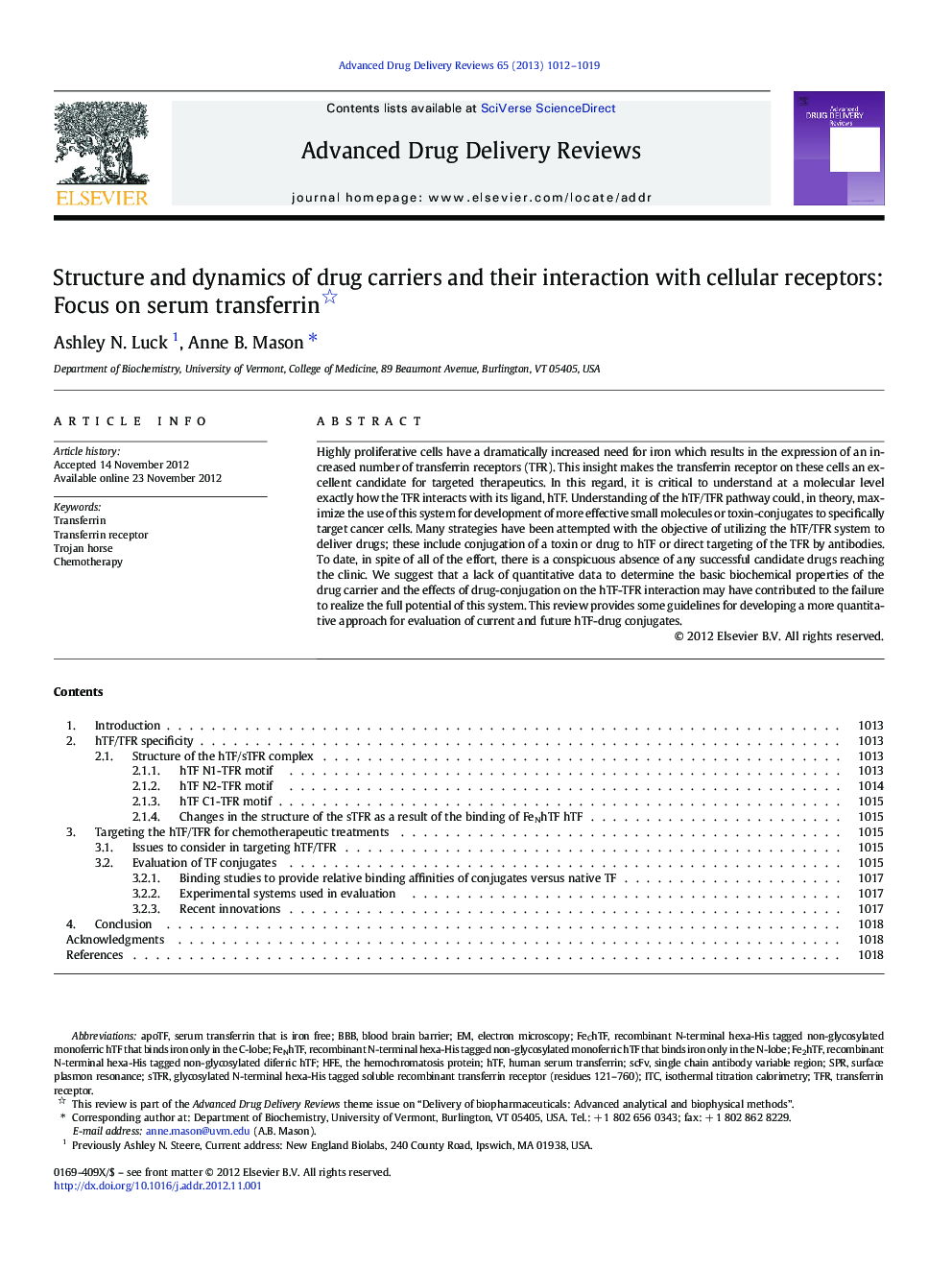| Article ID | Journal | Published Year | Pages | File Type |
|---|---|---|---|---|
| 2071079 | Advanced Drug Delivery Reviews | 2013 | 8 Pages |
Highly proliferative cells have a dramatically increased need for iron which results in the expression of an increased number of transferrin receptors (TFR). This insight makes the transferrin receptor on these cells an excellent candidate for targeted therapeutics. In this regard, it is critical to understand at a molecular level exactly how the TFR interacts with its ligand, hTF. Understanding of the hTF/TFR pathway could, in theory, maximize the use of this system for development of more effective small molecules or toxin-conjugates to specifically target cancer cells. Many strategies have been attempted with the objective of utilizing the hTF/TFR system to deliver drugs; these include conjugation of a toxin or drug to hTF or direct targeting of the TFR by antibodies. To date, in spite of all of the effort, there is a conspicuous absence of any successful candidate drugs reaching the clinic. We suggest that a lack of quantitative data to determine the basic biochemical properties of the drug carrier and the effects of drug-conjugation on the hTF-TFR interaction may have contributed to the failure to realize the full potential of this system. This review provides some guidelines for developing a more quantitative approach for evaluation of current and future hTF-drug conjugates.
Graphical abstractFigure optionsDownload full-size imageDownload high-quality image (110 K)Download as PowerPoint slide
